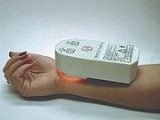
NASA Spinoff
Encyclopedia
A NASA spin-off is a spin-off
of technology that has been commercialized through NASA
funding, research, licensing, facilities, or assistance. NASA also publishes an annual journal titled Spinoff which features products whose development can be linked to NASA, for example through NASA funding (such as SBIR or STTR awards), licensing (from NASA patents), facilities (such as product testing at NASA facilities), NASA assistance (such as former NASA scientists helping to design a product), or NASA research.
In 1978, notable science fiction
author Robert A. Heinlein
was asked to appear before a joint committee of the House and Senate after recovering from one of the earliest known carotid bypass operations to correct a blocked artery that was causing transient ischemic attacks; in his testimony, reprinted in the book Expanded Universe, he characterized the technology that made the surgery possible as merely one of a long list of spinoff technologies from space development.
resources to private industry, referring to the commercial products as spin-offs. Well-known products that NASA claims as spin-offs include memory foam
(originally named temper foam), freeze-dried food, firefighting equipment, emergency "space blanket
s", Dustbusters, cochlear implant
s, and now Speedo
's LZR Racer
swimsuits. NASA claims that there are over 1650 other spin-offs in the fields of computer technology, environment and agriculture, health and medicine, public safety, transportation, recreation, and industrial productivity. Contrary to common belief, NASA did not invent Tang
, Velcro
, or Teflon.
In 2008, NASA announced an interactive Web feature, NASA @ Home and City, which uses Flash animation to show some examples of everyday products claimed to be spin-offs.
Below are 24 abstracts of products claimed by NASA to be spin-offs.
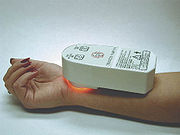 The work on applying light-emitting diode
The work on applying light-emitting diode
s in NASA space shuttle plant growth experiments leads to the development of a hand-held, high-intensity, LED unit developed by Quantum Devices Inc. The WARP 10 is said to relieve minor muscle and joint pain, stiffness,and increases local blood circulation. The WARP 10 is being used by the U.S. Department of Defense and U.S. Navy as a noninvasive “soldier self-care” device for minor injuries and pain. The next-generation WARP 75 has been used to relieve pain in bone marrow transplant patients, and will be used to combat the symptoms of bone atrophy, multiple sclerosis, diabetic complications, Parkinson’s disease, and in a variety of ocular applications.
Light-emitting diodes for medical purposes were inducted into the Space Foundation
's Space Technology Hall of Fame in 2000.
which measures the Thermal Radiation
emitted by the eardrum, similar to the way the temperature of stars and planets is measured. This method avoids contact with mucous membranes, and permits rapid temperature measurement of newborn or incapacitated patients. NASA supported the Diatek Corporation through the Technology Affiliates Program.
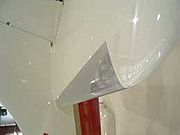 NASA funding under the Small Business Innovation Research (SBIR) program and work with NASA scientists advanced the development of a thermoelectric deicing system called Thermawing
NASA funding under the Small Business Innovation Research (SBIR) program and work with NASA scientists advanced the development of a thermoelectric deicing system called Thermawing
, a DC-powered air conditioner for single-engine aircraft called Thermacool, and high-output alternators to run them both. Thermawing allows pilots to safely fly through ice encounters and provides pilots of single-engine aircraft the heated wing technology usually reserved for larger, jet-powered craft. Thermacool, an electric air conditioning system, uses a new compressor whose rotary pump design runs off an
energy-efficient, brushless DC motor and allows pilots to use the air conditioner before the engine starts.
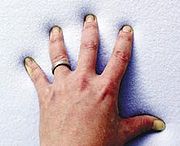 As the result of a program designed to develop a padding concept to improve crash protection for airplane passengers, Ames Research Center developed what is now called memory foam. Memory foam, or "Temper Foam", has been incorporated into mattresses, pillows, military and civilian aircraft, automobiles and motorcycles, sports safety equipment, amusement park rides and arenas, horseback saddles, archery targets, furniture, and human and animal prostheses. Its high-energy absorption and soft characteristics offer protection and comfort. Today, temper foam is being employed by NASCAR to provide added safety in racecars. Temper Foam was inducted into the Space Foundation
As the result of a program designed to develop a padding concept to improve crash protection for airplane passengers, Ames Research Center developed what is now called memory foam. Memory foam, or "Temper Foam", has been incorporated into mattresses, pillows, military and civilian aircraft, automobiles and motorcycles, sports safety equipment, amusement park rides and arenas, horseback saddles, archery targets, furniture, and human and animal prostheses. Its high-energy absorption and soft characteristics offer protection and comfort. Today, temper foam is being employed by NASCAR to provide added safety in racecars. Temper Foam was inducted into the Space Foundation
Space Technology Hall of Fame in 1998.
Space Technology Hall of Fame in 2009.
was tasked with the job, and developed a computer program to optimize the design of the
drill’s motor and ensure minimal power consumption. That computer program led to the development of a cordless miniature vacuum cleaner called the Dustbuster.
. In the United States, Action Products later commercialized this technique for other foods, concentrating on snack food. The foods are cooked, quickly frozen, and then slowly heated in a vacuum chamber to remove the ice crystals formed by the freezing process. The final product retains 98% of its nutrition and weighs much less than before drying. The ratio of weight before and after drying depends strongly on the particular food item but a typical freeze-dried weight is 20% of the original weight. Today, one of the benefits of this advancement in food preservation includes simple nutritious meals available to handicapped and otherwise homebound senior adults unable to take advantage of existing meal programs.
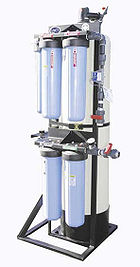
Space Technology Hall of Fame in 1988
for the iPad
. The application delivers real-time satellite data, including movies and stills, of Earth, that enable users to learn about subjects such as climate change
, Earth's dynamic systems and plant life on land and in the oceans. The content is accompanied by short descriptions about the Data and why it is important.
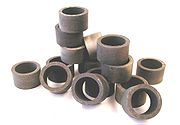 NASA developed a solid lubricant coating, PS300, which is deposited by thermal spraying to protect foil air bearings. PS300 lowers friction, reduces emissions, and has been used by NASA in advanced aeropropulsion engines, refrigeration compressors, turbochargers, and hybrid electrical turbogenerators. ADMA Products has found widespread industrial applications for the material.
NASA developed a solid lubricant coating, PS300, which is deposited by thermal spraying to protect foil air bearings. PS300 lowers friction, reduces emissions, and has been used by NASA in advanced aeropropulsion engines, refrigeration compressors, turbochargers, and hybrid electrical turbogenerators. ADMA Products has found widespread industrial applications for the material.
Government spin-off
Government spin-off is civilian goods which are the result of military or governmental research. One prominent example of a type of government spin-off is technology that has been commercialized through NASA funding, research, licensing, facilities, or assistance. NASA spin-off technologies have...
of technology that has been commercialized through NASA
NASA
The National Aeronautics and Space Administration is the agency of the United States government that is responsible for the nation's civilian space program and for aeronautics and aerospace research...
funding, research, licensing, facilities, or assistance. NASA also publishes an annual journal titled Spinoff which features products whose development can be linked to NASA, for example through NASA funding (such as SBIR or STTR awards), licensing (from NASA patents), facilities (such as product testing at NASA facilities), NASA assistance (such as former NASA scientists helping to design a product), or NASA research.
In 1978, notable science fiction
Science fiction
Science fiction is a genre of fiction dealing with imaginary but more or less plausible content such as future settings, futuristic science and technology, space travel, aliens, and paranormal abilities...
author Robert A. Heinlein
Robert A. Heinlein
Robert Anson Heinlein was an American science fiction writer. Often called the "dean of science fiction writers", he was one of the most influential and controversial authors of the genre. He set a standard for science and engineering plausibility and helped to raise the genre's standards of...
was asked to appear before a joint committee of the House and Senate after recovering from one of the earliest known carotid bypass operations to correct a blocked artery that was causing transient ischemic attacks; in his testimony, reprinted in the book Expanded Universe, he characterized the technology that made the surgery possible as merely one of a long list of spinoff technologies from space development.
NASA spin-off technologies
For more than 50 years, the NASA Innovative Partnerships Program has connected NASANASA
The National Aeronautics and Space Administration is the agency of the United States government that is responsible for the nation's civilian space program and for aeronautics and aerospace research...
resources to private industry, referring to the commercial products as spin-offs. Well-known products that NASA claims as spin-offs include memory foam
Memory foam
Memory foam is polyurethane with additional chemicals increasing its viscosity and density. It is often referred to as "visco-elastic" polyurethane foam, or low-resilience polyurethane foam . Higher-density memory foam softens in reaction to body heat, allowing it to mold to a warm body in a few...
(originally named temper foam), freeze-dried food, firefighting equipment, emergency "space blanket
Space blanket
A space blanket is a blanket used in emergencies to reduce heat loss in a person's body caused by thermal radiation, water evaporation and convection.-Manufacturing:First developed by NASA in 1964 for the US space program, the material consists of a...
s", Dustbusters, cochlear implant
Cochlear implant
A cochlear implant is a surgically implanted electronic device that provides a sense of sound to a person who is profoundly deaf or severely hard of hearing...
s, and now Speedo
Speedo
Speedo International Ltd. is a manufacturer and distributor of swimwear and swim-related accessories. Founded in Australia in 1914, the industry leading company is now a subsidiary of Pentland Group Plc. Today, the Speedo brand can be found on products ranging from swimsuits and goggles to wrist...
's LZR Racer
LZR Racer
The LZR Racer Suit is a line of high-end swimsuits manufactured by Speedo using a high-technology swimwear fabric composed of woven elastane-nylon and polyurethane. The line was launched on 13 February 2008...
swimsuits. NASA claims that there are over 1650 other spin-offs in the fields of computer technology, environment and agriculture, health and medicine, public safety, transportation, recreation, and industrial productivity. Contrary to common belief, NASA did not invent Tang
Tang (drink)
Tang is a fruit-flavored breakfast drink. Originally formulated by General Foods Corporation food scientist William A. Mitchell in 1957, it was first marketed in powdered form in 1959....
, Velcro
Velcro
Velcro is the brand name of the first commercially marketed fabric hook-and-loop fastener, invented in 1948 by the Swiss electrical engineer George de Mestral...
, or Teflon.
In 2008, NASA announced an interactive Web feature, NASA @ Home and City, which uses Flash animation to show some examples of everyday products claimed to be spin-offs.
Below are 24 abstracts of products claimed by NASA to be spin-offs.
Light-emitting diodes (LEDs)

Light-emitting diode
A light-emitting diode is a semiconductor light source. LEDs are used as indicator lamps in many devices and are increasingly used for other lighting...
s in NASA space shuttle plant growth experiments leads to the development of a hand-held, high-intensity, LED unit developed by Quantum Devices Inc. The WARP 10 is said to relieve minor muscle and joint pain, stiffness,and increases local blood circulation. The WARP 10 is being used by the U.S. Department of Defense and U.S. Navy as a noninvasive “soldier self-care” device for minor injuries and pain. The next-generation WARP 75 has been used to relieve pain in bone marrow transplant patients, and will be used to combat the symptoms of bone atrophy, multiple sclerosis, diabetic complications, Parkinson’s disease, and in a variety of ocular applications.
Light-emitting diodes for medical purposes were inducted into the Space Foundation
Space Foundation
The Space Foundation is a nonprofit organization that supports the global space industry through information and education programs. It is a resource for the entire space community - industry, national security organizations, civil space agencies, private space companies and the military around the...
's Space Technology Hall of Fame in 2000.
Infrared ear thermometers
Diatek Corporation and NASA developed an aural thermometerInfrared thermometer
Infrared thermometers infer temperature using a portion of the thermal radiation sometimes called blackbody radiation emitted by the object of measurement. They are sometimes called laser thermometers if a laser is used to help aim the thermometer, or non-contact thermometers to describe the...
which measures the Thermal Radiation
Thermal radiation
Thermal radiation is electromagnetic radiation generated by the thermal motion of charged particles in matter. All matter with a temperature greater than absolute zero emits thermal radiation....
emitted by the eardrum, similar to the way the temperature of stars and planets is measured. This method avoids contact with mucous membranes, and permits rapid temperature measurement of newborn or incapacitated patients. NASA supported the Diatek Corporation through the Technology Affiliates Program.
Ventricular assist device
Collaboration between NASA, Dr. Michael DeBakey, Dr. George Noon, and MicroMed Technology Inc. resulted in a heart pump for patients awaiting heart transplants. The MicroMed DeBakey ventricular assist device (VAD) functions as a “bridge to heart transplant” by pumping blood until a donor heart is available. The pump is approximately one-tenth the size of other currently marketed pulsatile VADs. Because of the pump’s small size, fewer patients developed device-related infections. It can operate up to 8 hours on batteries, giving patients the mobility to do normal, everyday activities.Artificial limbs
Advancements such as Environmental Robots Inc.’s development of artificial muscle systems for use in NASA space robotic and extravehicular activities have been adapted to create more functionally dynamic artificial limbs. Other commercial uses of NASA’s temper foam include moldable materials offering the natural look and feel of flesh, as well as preventing friction between the skin and the prosthesis, and heat/moisture buildup.Aircraft anti-icing systems

Thermawing
The ThermaWing ice protection system uses a flexible, electrically conductive, graphite foil attached to a wing's leading edge. Once activated the parting strip has an instant temperature rise, first melting the ice, then shedding the ice due to aerodynamic force.- Background :Supported by the NASA...
, a DC-powered air conditioner for single-engine aircraft called Thermacool, and high-output alternators to run them both. Thermawing allows pilots to safely fly through ice encounters and provides pilots of single-engine aircraft the heated wing technology usually reserved for larger, jet-powered craft. Thermacool, an electric air conditioning system, uses a new compressor whose rotary pump design runs off an
energy-efficient, brushless DC motor and allows pilots to use the air conditioner before the engine starts.
Highway safety
Jarmaine Safety grooving, the cutting of grooves in concrete to increase traction and prevent injury, was first developed to reduce aircraft accidents on wet runways. Represented by the International Grooving and Grinding Association, the industry expanded into highway and pedestrian applications. Safety grooving originated at Langley Research Center, which assisted in testing the grooving at airports and on highways. Skidding was reduced, stopping distance decreased, and a vehicle’s cornering ability on curves was increased. The process has been extended to animal holding pens, steps, parking lots, and other potentially slippery surfaces.Improved radial tires
Goodyear Tire and Rubber Company developed a fibrous material, five times stronger than steel, for NASA to use in parachute shrouds to soft-land the Viking Lander spacecraft on the Martian surface. Recognizing the durability of the material, Goodyear expanded the technology and went on to produce a new radial tire with a tread life expected to be 10000 miles (16,093.4 km) greater than conventional radials.Chemical detection
NASA contracted with Intelligent Optical Systems (IOS) to develop moisture- and pH-sensitive sensors to warn of corrosive conditions in aircraft before damage occurs. This sensor changes color in response to contact with its target. After completing the work with NASA, IOS was tasked by the U.S. Department of Defense to further develop the sensors for detecting chemical warfare agents and potential threats, such as toxic industrial compounds and nerve agents. IOS has sold the chemically sensitive fiber optic cables to major automotive and aerospace companies, who are finding a variety of uses for the devices such as aiding experimentation with nontraditional power sources, and as an economical “alarm system” for detecting chemical release in large facilities.Video enhancing and analysis systems
Intergraph Government Solutions developed its Video Analyst System (VAS) by building on Video Image Stabilization and Registration (VISAR) technology created by NASA to help FBI agents analyze video footage. Originally used for enhancing video images from nighttime videotapes made with hand-held camcorders, VAS is a tool for video enhancement and analysis offering support of full-resolution digital video, stabilization, frame-by-frame analysis, conversion of analog video to digital storage formats, and increased visibility of filmed subjects without altering underlying footage. Aside from law enforcement and security applications, VAS has also been adapted to serve the military for reconnaissance, weapons deployment, damage assessment, training, and mission debriefing.Fire-resistant reinforcement
Built and designed by Avco Corporation, the Apollo heat shield was coated with a material whose purpose was to burn and thus dissipate energy during reentry while charring, to form a protective coating to block heat penetration. NASA subsequently funded Avco’s development of other applications of the heat shield, such as fire-retardant paints and foams for aircraft, which led to intumescent epoxy material, which expands in volume when exposed to heat or flames, acting as an insulating barrier and dissipating heat through burn-off. Further innovations include steel coatings devised to make high-rise buildings and public structures safer by swelling to provide a tough and stable insulating layer over the steel for up to 4 hours of fire protection, ultimately to slow building collapse and provide more time for escape.Firefighting equipment
Firefighting equipment in the United States is based on lightweight materials developed for the U.S. Space Program. NASA and the National Bureau of Standards created a lightweight breathing system including face mask, frame, harness, and air bottle, using an aluminum composite material developed by NASA for use on rocket casings. The broadest fire-related technology transfer is the breathing apparatus for protection from smoke inhalation injury. Additionally, NASA’s inductorless electronic circuit technology led to lower-cost, more rugged, short-range two-way radio now used by firefighters. NASA also helped develop a specialized mask weighing less than 3 ounces (85 g) to protect the physically impaired from injuries to the face and head, as well as flexible, heat-resistant materials—developed to protect the space shuttle on reentry—which are being used both by the military and commercially in suits for municipal and aircraft-rescue firefighters.Temper foam

Space Foundation
The Space Foundation is a nonprofit organization that supports the global space industry through information and education programs. It is a resource for the entire space community - industry, national security organizations, civil space agencies, private space companies and the military around the...
Space Technology Hall of Fame in 1998.
Enriched baby food
Commercially available infant formulas now contain a nutritional enrichment ingredient that traces its existence to NASA-sponsored research on algae as a recycling agent for long-duration space travel. The substance, formulated into the products life’sDHA and life’sARA and based on microalgae, can be found in over 90% of the infant formulas sold in the United States, and are added to infant formulas in over 65 other countries. Martek Biosciences Corporation's founders and principal scientists acquired their expertise in this area while working on the NASA program. The microalgae food supplement was inducted into the Space FoundationSpace Foundation
The Space Foundation is a nonprofit organization that supports the global space industry through information and education programs. It is a resource for the entire space community - industry, national security organizations, civil space agencies, private space companies and the military around the...
Space Technology Hall of Fame in 2009.
Portable cordless vacuums
For the Apollo space mission, NASA required a portable, self-contained drill capable of extracting core samples from below the lunar surface. Black & DeckerBlack & Decker
Black & Decker Corporation is a corporation based in Towson, Maryland, United States, that designs and imports power tools and accessories, hardware and home improvement products, and technology based fastening systems...
was tasked with the job, and developed a computer program to optimize the design of the
drill’s motor and ensure minimal power consumption. That computer program led to the development of a cordless miniature vacuum cleaner called the Dustbuster.
Freeze drying
In planning for the long-duration Apollo missions, NASA conducted extensive research into space food. One of the techniques developed in 1938 by Nestle was freeze dryingFreeze drying
Freeze-drying is a dehydration process typically used to preserve a perishable material or make the material more convenient for transport...
. In the United States, Action Products later commercialized this technique for other foods, concentrating on snack food. The foods are cooked, quickly frozen, and then slowly heated in a vacuum chamber to remove the ice crystals formed by the freezing process. The final product retains 98% of its nutrition and weighs much less than before drying. The ratio of weight before and after drying depends strongly on the particular food item but a typical freeze-dried weight is 20% of the original weight. Today, one of the benefits of this advancement in food preservation includes simple nutritious meals available to handicapped and otherwise homebound senior adults unable to take advantage of existing meal programs.
Environmental and agricultural resources

Water purification
NASA engineers are collaborating with qualified companies to develop systems intended to sustain the astronauts living on the International Space Station and future Moon and space missions. This system turns wastewater from respiration, sweat, and urine into drinkable water. Commercially, this system is benefiting people all over the world who need affordable, clean water, especially in remote locations. By combining the benefits of chemical adsorption, ion exchange, and ultra-filtration processes, this technology can yield safe, drinkable water from the most challenging sources, such as in underdeveloped regions where well water may be heavily contaminated.Solar energy
Homes across the country are now being outfitted with high-performance single crystal silicon solar power cells that allow them to reduce their traditional energy expenditures and reduce pollution. The advanced technology behind these solar devices—which provide up to 50% more power than conventional solar cells—originated with the efforts of a NASA-sponsored 28-member coalition forming the Environmental Research Aircraft and Sensor Technology (ERAST) Alliance. ERAST’s goal was to develop remotely piloted aircraft, intended to fly unmanned at high altitudes for days at a time and requiring advanced solar power sources that did not add weight. As a result, SunPower Corporation created advanced silicon-based cells for terrestrial or airborne applications.Pollution remediation
NASA’s microencapsulating technology enabled the creation of a "Petroleum Remediation Product," which safely cleans petroleum-based pollutants from water. The PRP uses thousands of microcapsules—tiny balls of beeswax with hollow centers. Water cannot penetrate the microcapsule’s cell, but oil is absorbed into the beeswax spheres as they float on the water’s surface. Contaminating chemical compounds that originally come from crude oil (such as fuels, motor oils, or petroleum hydrocarbons) are caught before they settle, limiting damage to ocean beds.Structural analysis software
NASA software engineers have created thousands of computer programs over the decades equipped to design, test, and analyze stress, vibration, and acoustical properties of a broad assortment of aerospace parts and structures. The NASA Structural Analysis Program, or NASTRAN, is considered one of the most successful and widely-used NASA software programs. It has been used to design everything from Cadillacs to roller coaster rides. Originally created for spacecraft design, NASTRAN has been employed in a host of non-aerospace applications and is available to industry through NASA’s Computer Software Management and Information Center (COSMIC). COSMIC maintains a library of computer programs from NASA and other government agencies and sells them at a fraction of the cost of developing a new program. NASA Structural Analysis Computer Software was inducted into the Space FoundationSpace Foundation
The Space Foundation is a nonprofit organization that supports the global space industry through information and education programs. It is a resource for the entire space community - industry, national security organizations, civil space agencies, private space companies and the military around the...
Space Technology Hall of Fame in 1988
Remotely controlled ovens
Embedded Web Technology (EWT) software—originally developed by NASA for use by astronauts operating experiments on the International Space Station—lets a user monitor and/or control a device remotely over the Internet. NASA supplied this technology and guidance to TMIO LLC, which developed remote control and monitoring of a new intelligent oven product named “ConnectIo.” With combined cooling and heating capabilities, ConnectIo refrigerates food until a customized pre-programmable cooking cycle begins. The menu allows the user to simply enter the dinner time, and the oven automatically switches from refrigeration to the cooking cycle, so that the meal will be ready as the family arrives home for dinner.NASA Visualization Explorer
On July 26, 2011, NASA released the NASA Visualization Explorer appApplication software
Application software, also known as an application or an "app", is computer software designed to help the user to perform specific tasks. Examples include enterprise software, accounting software, office suites, graphics software and media players. Many application programs deal principally with...
for the iPad
IPad
The iPad is a line of tablet computers designed, developed and marketed by Apple Inc., primarily as a platform for audio-visual media including books, periodicals, movies, music, games, and web content. The iPad was introduced on January 27, 2010 by Apple's then-CEO Steve Jobs. Its size and...
. The application delivers real-time satellite data, including movies and stills, of Earth, that enable users to learn about subjects such as climate change
Climate change
Climate change is a significant and lasting change in the statistical distribution of weather patterns over periods ranging from decades to millions of years. It may be a change in average weather conditions or the distribution of events around that average...
, Earth's dynamic systems and plant life on land and in the oceans. The content is accompanied by short descriptions about the Data and why it is important.
Powdered lubricants

Improved mine safety
An ultrasonic bolt elongation monitor developed by a NASA scientist for testing tension and high-pressure loads on bolts and fasteners has continued to evolve over the past three decades. Today, the same scientist and Luna Innovations are using a digital adaptation of this same device for destructive evaluation of railroad ties, groundwater analysis, radiation, and as a medical testing device to assess levels of internal swelling and pressure for patients suffering from intracranial pressure and compartment syndrome, a painful condition that results when pressure within muscles builds to dangerous levels.Food safety
Faced with the problem of how and what to feed an astronaut in a sealed capsule under weightless conditions while planning for human space flight, NASA enlisted the aid of The Pillsbury Company to address two principal concerns: eliminating crumbs of food that might contaminate the spacecraft’s atmosphere and sensitive instruments, and assuring absolute absence of disease-producing bacteria and toxins. Pillsbury developed the Hazard Analysis and Critical Control Point (HACCP) concept to address NASA’s second concern. HACCP is designed to prevent food safety problems rather than to catch them after they have occurred. The U.S. Food and Drug Administration has applied HACCP guidelines for the handling of seafood, juice, and dairy products.Mistakenly attributed spinoffs
The following is a list of technologies sometimes mistakenly attributed to NASA. In some cases NASA popularized technology or aided its development.- Barcodes (NASA developed a special type of barcode, but this should not be mistaken for the original one.)
- Cordless power tools (The first cordless power tool was unveiled by Black & DeckerBlack & DeckerBlack & Decker Corporation is a corporation based in Towson, Maryland, United States, that designs and imports power tools and accessories, hardware and home improvement products, and technology based fastening systems...
in 1961. It was used by NASA and a number of spinoff products came out of that.) - Magnetic Resonance Imaging (MRI)Magnetic resonance imagingMagnetic resonance imaging , nuclear magnetic resonance imaging , or magnetic resonance tomography is a medical imaging technique used in radiology to visualize detailed internal structures...
(NASA has, however, contributed to its advances over the years. MRI is best known as a device for body scanning.) - Quartz clockQuartz clockA quartz clock is a clock that uses an electronic oscillator that is regulated by a quartz crystal to keep time. This crystal oscillator creates a signal with very precise frequency, so that quartz clocks are at least an order of magnitude more accurate than good mechanical clocks...
s (The quartz clock dates back to 1927. However in the late 1960s, NASA partnered with a company to make a quartz clock that was on the market for a few years.) - Smoke detectors (NASA’s connection to the modern smoke detector is that it made one with adjustable sensitivity as part of the Skylab project.)
- Tang juice powderTang (drink)Tang is a fruit-flavored breakfast drink. Originally formulated by General Foods Corporation food scientist William A. Mitchell in 1957, it was first marketed in powdered form in 1959....
(Tang was developed by General FoodsGeneral FoodsGeneral Foods Corporation was a company whose direct predecessor was established in the USA by Charles William Post as the Postum Cereal Company in 1895. The name General Foods was adopted in 1929, after several corporate acquisitions...
in 1957, and it has been for sale since 1959. It was used in the first orbit missions, which gave awareness to it.) - Teflon (Invented for DuPontDuPontE. I. du Pont de Nemours and Company , commonly referred to as DuPont, is an American chemical company that was founded in July 1802 as a gunpowder mill by Eleuthère Irénée du Pont. DuPont was the world's third largest chemical company based on market capitalization and ninth based on revenue in 2009...
in 1938 and used on frying pans from the 1950s. It has been applied by NASA to heat shields, space suitsSpace suitA space suit is a garment worn to keep an astronaut alive in the harsh environment of outer space. Space suits are often worn inside spacecraft as a safety precaution in case of loss of cabin pressure, and are necessary for extra-vehicular activity , work done outside spacecraft...
, and cargo hold liners.) - VelcroVelcroVelcro is the brand name of the first commercially marketed fabric hook-and-loop fastener, invented in 1948 by the Swiss electrical engineer George de Mestral...
(A Swiss invention from the 1940s. Velcro was used during the Apollo missions to anchor equipment for astronauts’ convenience in zero gravityWeightlessnessWeightlessness is the condition that exists for an object or person when they experience little or no acceleration except the acceleration that defines their inertial trajectory, or the trajectory of pure free-fall...
situations.)
History of the Spinoff publication
Spinoff is a NASA publication featuring technology made available to the public. Since 1976, NASA has featured an average of 50 technologies each year in the annual publication, and Spinoff maintains a searchable database of these technologies. When products first spun off from space research, NASA presented a black and white report in 1973, titled the "Technology Utilization Program Report". Because of interest in the reports, NASA decided to create the annual publications in color. Spinoff was first published in 1976, and since then, NASA has distributed free copies to universities, the media, inventors, and the general public. Spinoff describes how NASA works with various industries and small businesses to bring new technology to the public. As of 2008, there were over 1600 Spinoff products in the database, dating back to 1976.See also
- NASA STI ProgramNASA STI ProgramThe Scientific and Technical Information Program Office of the National Aeronautics and Space Administration collects, organizes, preserves, and releases the Agency's scientific and technical information . STI is derived from NASA's research and development efforts and NASA projects, programs,...
, for NASA's Science and Technical Information program - NASA Tech BriefsNASA Tech BriefsWhen the U.S. Congress formed the National Aeronautics and Space Administration in 1958, it mandated in the charter that NASA and its contractors must report to industry any new, commercially-significant technologies developed in the course of their R&D, so that engineers, managers, and scientists...
, for NASA innovations that are not necessarily commercial yet - Timeline of United States inventionsTimeline of United States inventionsThe following articles cover the timeline of United States inventions* Timeline of United States inventions * Timeline of United States inventions * Timeline of United States inventions...
- Timeline of United States discoveriesTimeline of United States discoveriesTimeline of United States discoveries encompasses the breakthroughs of human thought and knowledge of new scientific findings, phenomena, places, things, and what was previously unknown to exist...
- National Inventors Hall of FameNational Inventors Hall of FameThe National Inventors Hall of Fame is a not-for-profit organization dedicated to recognizing, honoring and encouraging invention and creativity through the administration of its programs. The Hall of Fame honors the men and women responsible for the great technological advances that make human,...
- Science and technology in the United StatesScience and technology in the United StatesThe United States came into being around the Age of Enlightenment , a period in which writers and thinkers rejected the superstitions of the past. Instead, they emphasized the powers of reason and unbiased inquiry, especially inquiry into the workings of the natural world...
- Technological and industrial history of the United States
- Space FoundationSpace FoundationThe Space Foundation is a nonprofit organization that supports the global space industry through information and education programs. It is a resource for the entire space community - industry, national security organizations, civil space agencies, private space companies and the military around the...
Space Certification and Space Technology Hall of Fame

